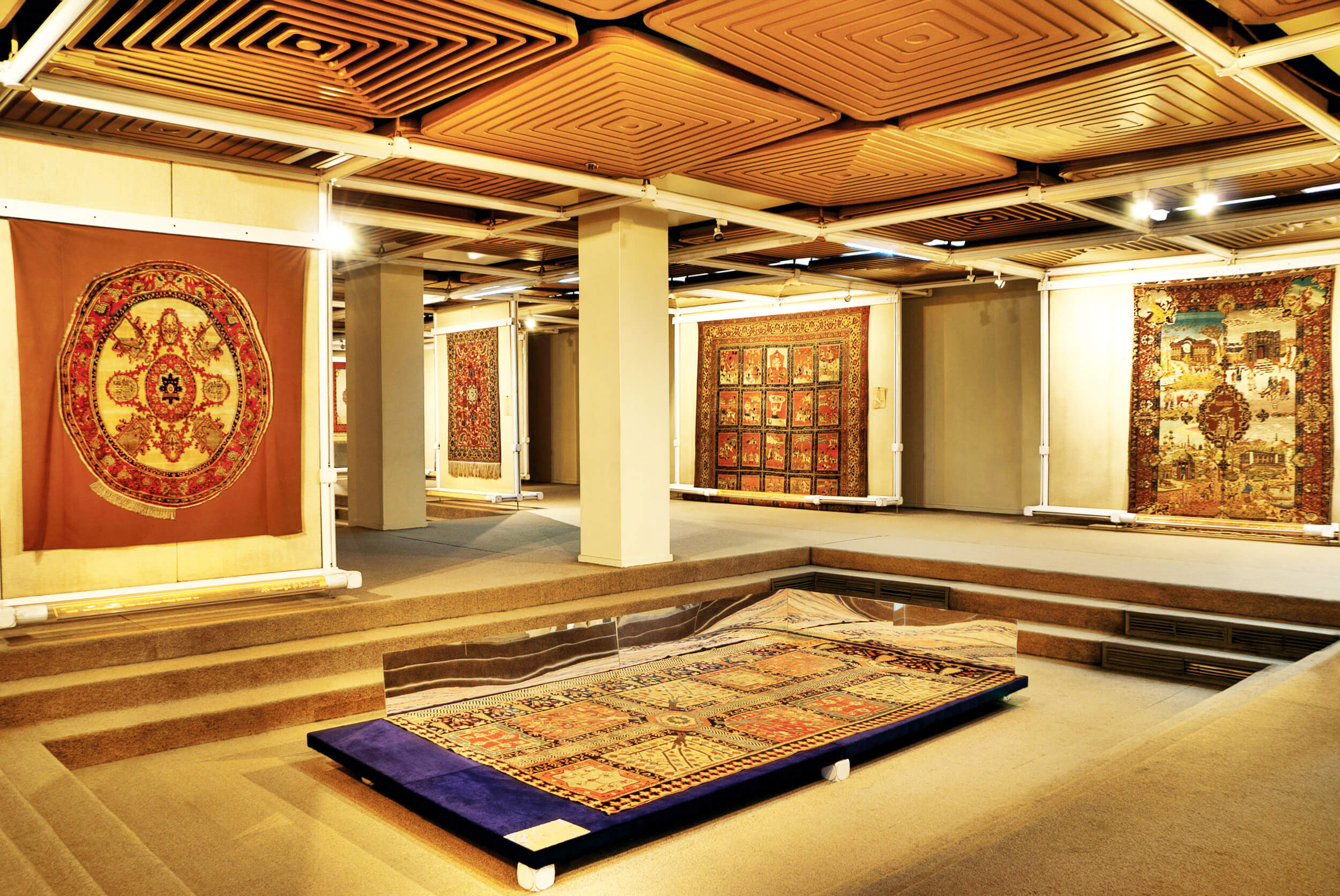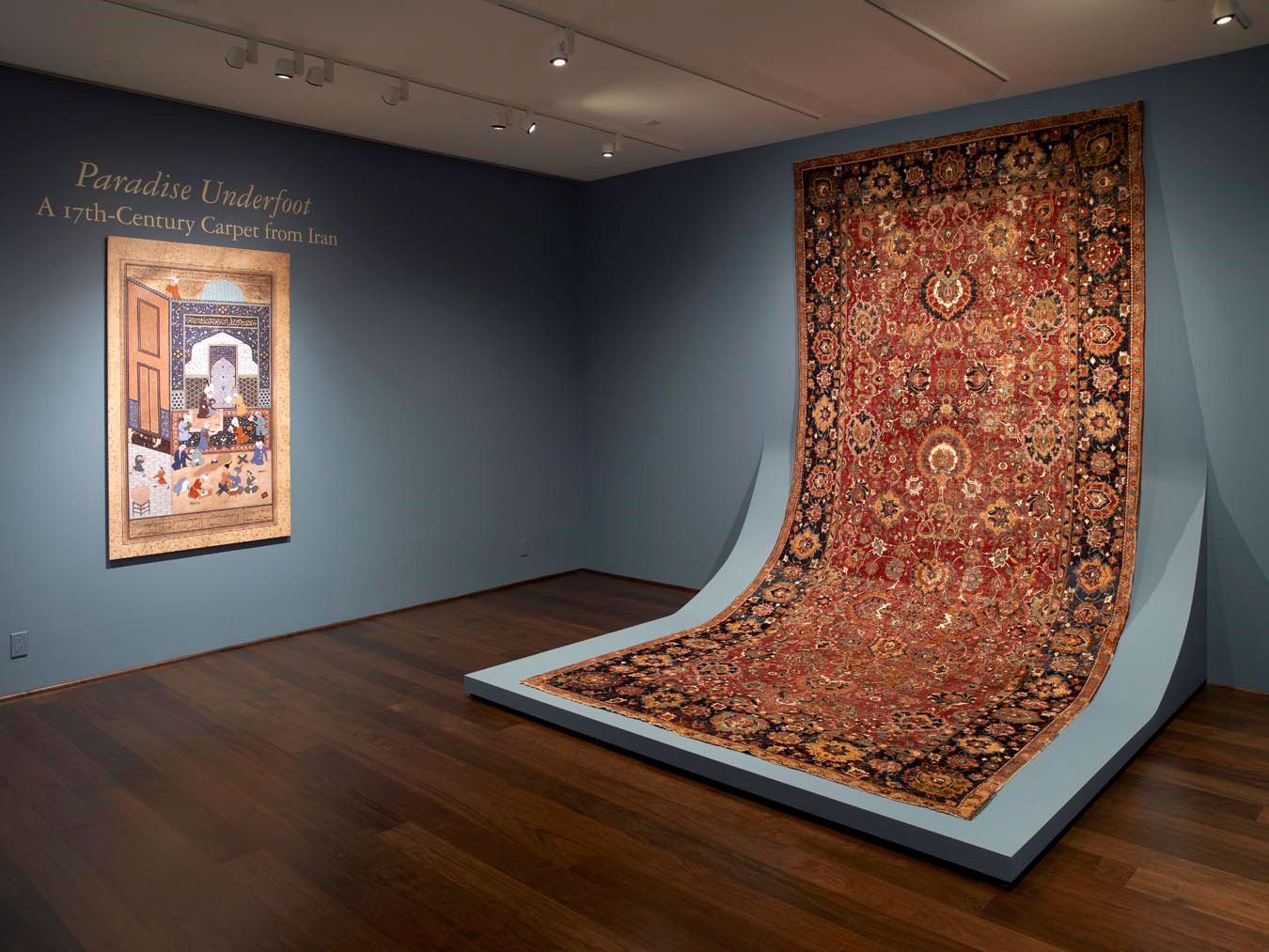The Carpet Museum of Iran, located on the northern edge of Laleh Park, facing Sepahbod Gharani Street in Tehran, showcases Iran’s rich cultural heritage, presenting one of the most extensive collections of Persian carpets worldwide. Located in Tehran, the museum serves as a cultural hub, attracting visitors from across the globe to explore the intricate artistry and historical significance of Persian carpet weaving. With its striking architectural design and comprehensive exhibitions, the museum offers a captivating journey through centuries of Persian craftsmanship and creativity.

Exploring the Facade and Design
Designed by architect Abdol-Aziz Mirza Farmanfarmaian, the museum’s exterior facade resembles the intricate patterns of a Persian carpet, inviting visitors to delve into the exquisite world of handwoven carpets and kilims. Covering an expansive display area of 3400 square meters, the museum boasts two halls dedicated to showcasing a diverse array of handcrafted carpets and kilims.
The museum is divided into two sections: permanent exhibitions and temporary showcases. The permanent exhibition houses 150 exquisite and historical carpets, offering a comprehensive journey through Iran’s carpet-weaving legacy. These carpets hail from renowned carpet-weaving centers such as Kashan, Kerman, Isfahan, Tabriz, Khorasan, Kurdistan, and beyond.
The upper floor gallery of the Iran Carpet Museum functions as a venue for temporary exhibitions, often showcasing more ‘tribal’ artworks. Visitors may find it worthwhile to explore the small shop in the main entrance hall, where several Farsi publications offer English summaries.
There is a small cafeteria located opposite the shop. Visitors should be aware that the cafeteria attendant may claim to have no change, and it’s advisable to verify the prices against the displayed notice.
Masterpieces from Iran’s Carpet Tradition
One of the museum’s highlights is the “Mirza Kuchak Khan Jungle Carpet” from Kashan, measuring 130 by 220 centimeters. This carpet depicts Mirza Kuchak Khan, a national hero dressed in military attire with a rifle and cartridge belt, symbolizing his pivotal role in Iranian history. The inscription above the image bears the name of the Mala-Mahmoud factory, likely indicating the carpet’s creation during the late Qajar period.
Among the museum’s treasures is the intricately woven carpet from Kurdistan, featuring a pictorial depiction of Jesus Christ (PBUH) with his disciples, showcasing exquisite golden hues and elaborate motifs. The museum also showcases fine carpets from various regions, including the five Kurdish provinces of Sanandaj, Bijar, Kacakabr, and Sanqar. Notable among these is the “Turanjdar Tusbagi” design, woven in the late 13th century AH in Sanandaj, exemplifying the region’s mastery of weaving.
In addition to traditional designs, the museum displays carpets with pictorial motifs inspired by Persian literature and mythology. Notably, carpets featuring scenes from the epic poem “Shahnameh” by Ferdowsi offer glimpses into Iran’s rich literary, mythical, religious, and cultural heritage.
One exceptional exhibit is the “Harati” or “Interwoven Fish” carpet, which uniquely portrays realistic depictions of fish—a motif with roots in ancient Persian beliefs. This motif, prevalent in carpets of the pre-Zoroastrian era, symbolizes Zoroaster’s journey guided by four fish. Its presence in carpets reflects the enduring influence of ancient Iranian beliefs on Persian art.
The Role of the Carpet Museum in Cultural Heritage
The Carpet Museum of Iran serves as a repository of Persian artistry and a vibrant cultural hub bridging the past with the present. Through its meticulously curated collections, the museum preserves Iran’s rich carpet-weaving tradition, inviting visitors to immerse themselves in the timeless beauty of Persian carpets.

Through its extensive collection, engaging exhibitions, and enriching cultural offerings, the museum provides visitors with a profound insight into Iranian carpets’ intricate techniques, historical significance, and aesthetic beauty. As a hub for scholars, enthusiasts, and curious minds alike, the museum continues to serve as a beacon of appreciation for Persian artistry and craftsmanship, ensuring that the legacy of Iran’s carpet-weaving tradition endures for future generations.
Resources and Assistance for Carpet Enthusiasts
We recommend reading our articles about Iranian carpets and Persian rug styles to understand their characteristics comprehensively. Whether you are an enthusiast or looking to enhance your space with the timeless elegance of Persian carpets, we are here to assist you. Our services extend from providing insightful consultations to facilitating the purchase of Persian carpets that perfectly complement your space. Contact us and explore the rich Iranian craftsmanship with us and find the perfect piece to add a touch of cultural heritage to your surroundings.
